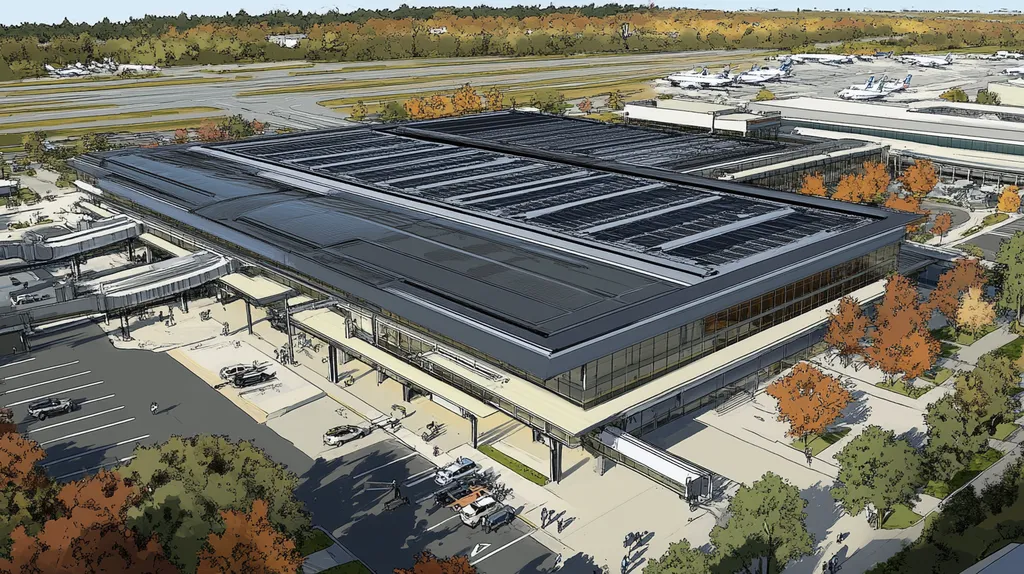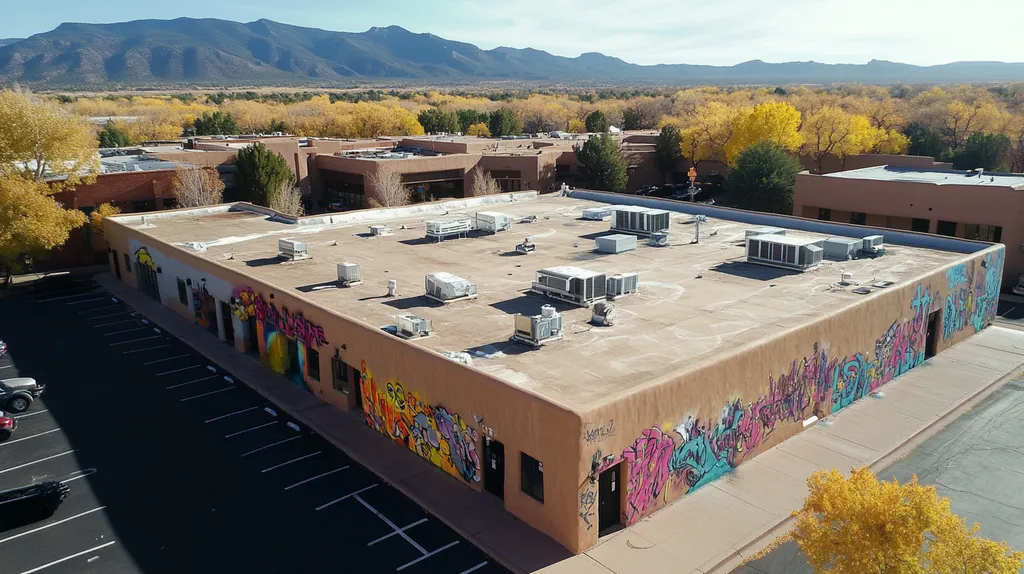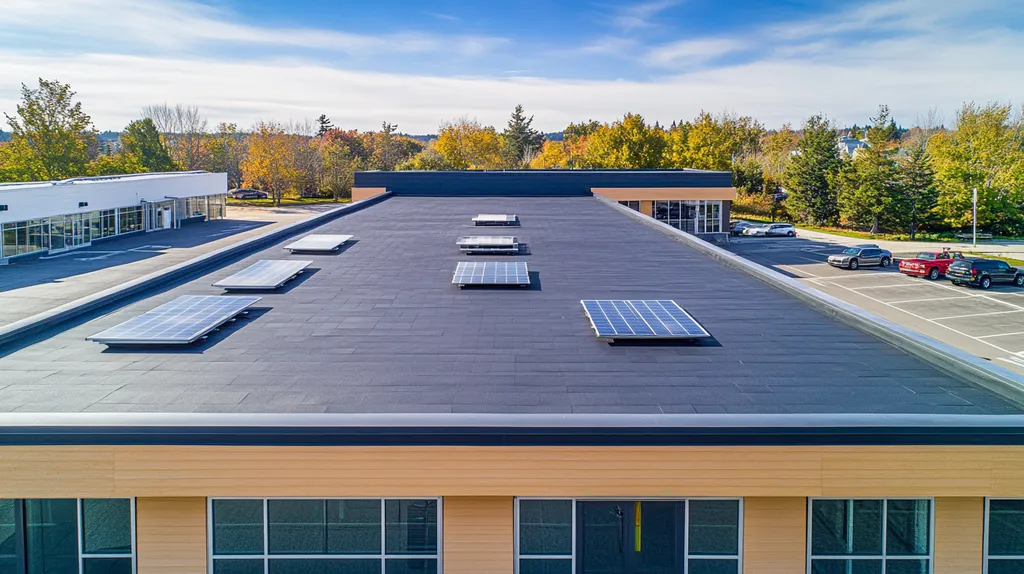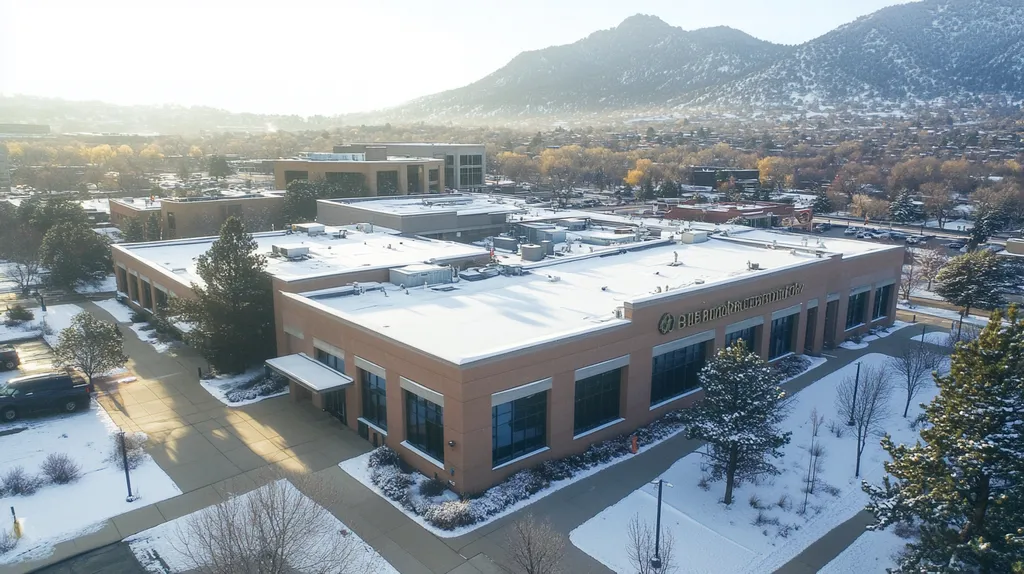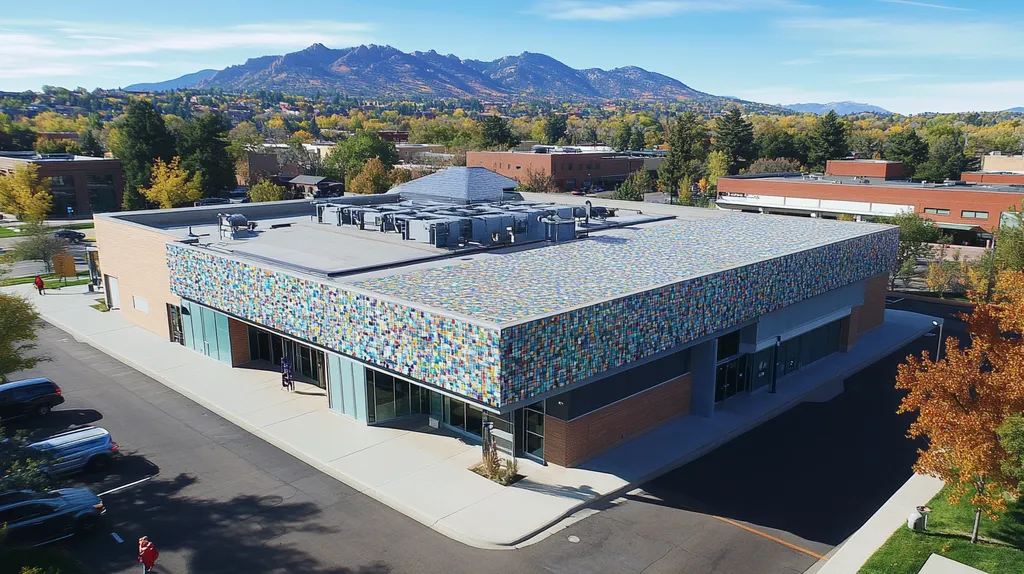With commercial roofs accounting for up to 40% of urban heat island effects and stormwater runoff issues, industrial facility managers face mounting pressure to implement sustainable roofing solutions. Green roof installations have emerged as a proven strategy, reducing energy costs by up to 25% while extending roof lifespan by over 200%.
However, successful implementation requires careful navigation of structural requirements, financial considerations, and ongoing maintenance protocols. Facility managers must understand critical factors across performance, compliance, and risk management to maximize their investment.
This comprehensive guide provides an actionable framework for industrial property owners to evaluate, install, and maintain effective green roof systems that deliver lasting environmental and economic benefits.
SECTION 1: PERFORMANCE FACTORS
As green roofs become more popular in industrial buildings, grasping key performance factors is essential. Failing to address these issues can lead to severe structural problems, waste energy, and compromise stormwater management. In regions prone to heavy rainfall, inadequate stormwater systems can cause flooding and significant property damage. Conducting a comprehensive evaluation of structural integrity, insulation, and stormwater management is crucial for a successful green roof installation and maximizing its many advantages.
Structural Integrity Assessment
Before installing a green roof, ensuring the structural integrity of the building is critical. Industrial roofs must be strong enough to support the extra weight of soil and plants; for example, a fully saturated green roof can weigh up to 100 pounds per square foot.
By assessing the load-bearing capacity, facility managers can safeguard both the building and its occupants. Engaging a structural engineer to evaluate existing supports guarantees they can handle the added weight.
Failing to conduct proper assessments has led to roof collapses in the past, highlighting the importance of this essential step. Collaborating with professionals can prevent costly mistakes and liabilities.
Additionally, building codes may dictate specific requirements for green roof installations. Adhering to local regulations is vital to circumvent legal issues.
Key Action Items
Insulation and Energy Efficiency
The insulation capabilities of green roofs are critical for enhancing energy efficiency. The combination of plants and soil acts as a natural insulator, significantly reducing heating and cooling costs. Research indicates that green roofs can lower rooftop temperatures by as much as 40% in the summer months.
Improving energy efficiency has a direct and positive impact on operational costs. With energy expenses continually rising, it’s essential for industrial facilities to decrease their energy consumption.
Well-designed green roofs provide a buffer against temperature swings, lessening the strain on HVAC systems. This not only improves occupant comfort but also extends the lifespan of heating and cooling equipment.
Moreover, energy-efficient measures can lead to valuable LEED certifications, enhancing property value and attracting environmentally conscious tenants.
Key Action Items
Stormwater Management
Effective stormwater management is a vital feature of green roof systems. These roofs can absorb significant rainfall, reducing runoff and lowering the risk of flooding. In urban areas dominated by impervious surfaces, green roofs can significantly alleviate stormwater issues.
For example, a well-designed green roof can retain up to 80% of precipitation, easing pressure on local drainage systems and potentially lowering utility costs associated with stormwater management.
Good stormwater management also serves to improve local water quality. By filtering pollutants through the soil and plants, green roofs contribute to healthier waterways.
As municipalities enforce stricter stormwater management regulations, facilities that comply will avoid penalties while enhancing their sustainable operational profile.
Key Action Items
SECTION 2: FINANCIAL CONSIDERATIONS
For industrial facilities grappling with rising operational costs, the financial aspects of green roof installation are of paramount importance. While the initial investment can seem high, studies consistently show that these systems can lead to impressive long-term savings. By understanding installation expenses, operational savings, and available incentives, property owners can make better-informed decisions regarding green roofing systems.
Initial Installation Costs
At first glance, the costs associated with green roof systems may appear higher than conventional options. The design complexity and specialized materials contribute to these upfront expenses, typically ranging from $15 to $25 per square foot, influenced by factors such as plant selection and irrigation needs.
However, it is essential to weigh these costs against the overall value provided. A green roof’s elements—like waterproofing, drainage, and vegetation—work together to improve longevity and performance. Investing in high-quality materials can ultimately lower future repair and replacement expenses.
Partnering with experienced contractors can also enhance the installation process. Though going with a reputable company may raise initial costs, their expertise can lead to efficiencies that save money over time and reduce the risk of costly errors.
Key Action Items
Long-Term Cost Savings
Green roofs offer more than striking visual appeal; their potential for long-term cost savings is compelling. Research shows these systems can reduce energy costs by up to 25% by improving insulation and minimizing heat absorption. This leads to decreased reliance on heating and cooling systems.
Additionally, green roofs can enhance a building’s lifespan, safeguarding the roof structure from harmful UV exposure and weather extremes. This added durability can significantly cut down on repair and replacement expenses over time, generating noteworthy financial benefits.
Water management is yet another area where green roofs deliver savings. They aid in reducing stormwater runoff, which often incurs drainage and wastewater management costs. By capturing rainfall, these roofs can lower stormwater fees and alleviate pressures on local drainage systems.
Key Action Items
Incentives and Tax Credits
Exploring financial incentives and tax credits can significantly offset the costs of installing green roofs. Numerous state and local governments provide programs aimed at promoting sustainable building practices, including grants that directly fund green roof installations.
Tax credits can further alleviate financial burdens. Depending on location, owners may qualify for tax deductions related to environmentally friendly building features such as green roofs. These financial incentives can effectively lower overall costs and improve return on investment.
In addition to government programs, nonprofit organizations may offer additional support for sustainable initiatives through funding and educational resources. Engaging with these groups can unveil even more financial assistance options, helping to ease upfront costs.
Key Action Items
SECTION 3: COMPLIANCE REQUIREMENTS
Installing a green roof on industrial buildings offers remarkable benefits but comes with important responsibilities. Compliance with local building codes and environmental standards is non-negotiable; overlooking these regulations can lead to costly fines and disruptive delays. Therefore, property owners and facility managers must adeptly navigate a complex landscape of requirements to ensure a smooth installation process. By understanding compliance factors, they can enhance the longevity and performance of their green roof systems.
Local Building Codes and Regulations
Local building codes dictate crucial aspects such as structural integrity, drainage, and safety requirements. In many urban areas, obtaining a specific permit for green roofs is mandatory to ensure that the structure is prepared to handle the additional weight. Facility managers should engage a local architect knowledgeable about these codes to avoid pitfalls.
Non-compliance can stop projects in their tracks or lead to unexpected financial penalties. It’s essential for facility managers to stay abreast of local codes and any updates that may surface during planning phases. Regular communication with local regulatory bodies can facilitate a clearer understanding of what’s required, thus expediting the approval process.
Adding structural reinforcements that comply with building codes can extend the life of the green roof. This proactive measure minimizes the risk of structural failure, marrying compliance with best industry practices.
Key Action Items
Environmental Standards and Certifications
Green roofs are pivotal in achieving environmental sustainability, but they must align with specific standards. Organizations like Green Roofs for Healthy Cities (GRHC) provide valuable guidelines. These help define what constitutes a sustainable green roof, ensuring both regulatory compliance and environmental integrity.
Attaining certifications like LEED (Leadership in Energy and Environmental Design) can significantly boost property appeal. Meeting these standards not only fulfills regulatory requirements but can also unlock financial incentives, including tax rebates or grants for sustainable building initiatives.
Understanding and integrating these environmental standards early in the design process can streamline certification outcomes. Facility managers should work closely with experienced professionals to embed environmental criteria into the design effectively.
Key Action Items
Permitting and Approval Process
The path to securing permits for green roofs can be complex, often requiring multiple approvals from various municipal departments. Engaging with local planning departments early in the process helps clarify necessary documentation and overall timelines.
Delays in securing permits can lead to significant project setbacks and increased costs. Facility managers should anticipate possible lengthy approval durations and factor those timelines into project scheduling to avoid disruption. Keeping all stakeholders informed during this phase is also critical.
Documentation might include detailed plans demonstrating how the green roof will comply with safety, weight, and drainage specifications. Collaboration with architects and contractors is essential to ensure these plans are thorough and adhere to compliance standards.
Key Action Items
SECTION 4: RISK MANAGEMENT
Implementing a green roof comes with its share of risks that must be understood and managed effectively. Issues like waterproofing failures can result in damaging leaks and costly structural deterioration. Furthermore, selecting the wrong plants can jeopardize the roof’s sustainability. Additionally, addressing liability and insurance implications is vital for safeguarding investments and adhering to industry standards. This section highlights key risk areas and lays out actionable strategies to mitigate them.
Waterproofing and Leak Prevention
Waterproofing serves as the essential first barrier against water damage in any roofing system, particularly green roofs. A single breach can trigger extensive issues, impacting the roof and potentially the entire building. Therefore, it’s imperative to use high-grade waterproofing materials designed to endure constant moisture and root intrusion from plants.
Conducting regular inspections is essential for identifying vulnerabilities early on. Poor installation methods or lack of maintenance can cause leaks that lead to significant repair costs and operational downtime.
Establishing a stringent installation protocol can significantly reduce these risks. Professionals should perform a detailed inspection of the waterproofing layer before planting, ultimately preserving resources and protecting the building’s integrity.
Working with reputable manufacturers and following accreditation guidelines can also bolster the reliability of waterproofing solutions, ensuring compliance with industry best practices.
Key Action Items
Plant Selection and Maintenance Risks
Choosing the appropriate plant species is vital for the long-term success of a green roof. Selecting plants ill-suited for the local climate can result in high mortality rates, escalating maintenance costs. Plants that don’t thrive can detract from both the aesthetic appeal and the functionality of the green roof.
Routine maintenance—including watering, trimming, and replacing plants—is critical for sustaining plant health. Facilities managers should embrace a proactive maintenance plan that involves monitoring soil conditions and promptly replacing underperforming plants.
Effective pest and disease management is also crucial. Adopting a proactive approach to identifying and treating infestations can prevent widespread plant failures and support the health of the ecosystem.
Collaborating with horticultural experts can provide invaluable insights into plant selection and ongoing care, minimizing the risk of costly mistakes. Investing in expert guidance sets the foundation for a sustainable and thriving green roof.
Key Action Items
Liability and Insurance Considerations
Introducing a green roof brings new liability concerns for property owners to address. Aspects such as rainwater management, structural stability, and public access can create risks that must be carefully managed. A thorough risk assessment should be conducted to identify specific vulnerabilities associated with the green roof system.
It is also necessary to review commercial property insurance to ensure adequate coverage for the distinctive features of a green roof. Neglecting to update policies may result in coverage gaps, putting property owners at serious financial risk in case of a claim.
Engaging with an insurance specialist familiar with green roofs can offer valuable assistance in determining appropriate coverage options. Participating in risk management programs can also provide potential discounts on insurance premiums for well-managed facilities.
Ultimately, staying current with regulatory changes and leading industry practices in green roofing is beneficial for reducing liability risks. By adopting a proactive mindset, property owners can safeguard their investments and foster sustainable green roof installations.
Key Action Items
SECTION 5: OPERATIONAL PROCEDURES
Successfully implementing a green roof system extends beyond the initial setup; it demands clear operational procedures to secure its long-term viability. With roofs accounting for approximately 25% of urban heat pollution, property owners and facility managers face significant responsibilities. Neglecting proper implementation can lead to costly failures. By understanding the stages of installation alongside regular maintenance and inspection protocols, stakeholders can protect their investments and enhance the environmental advantages of green roofs.
Installation Process and Phases
The installation of a green roof unfolds in several carefully planned phases. First, assess the building’s structural strength to confirm that it can bear the added weight of the green roof system. Following this, it’s crucial to install a high-quality waterproofing membrane to guard against leaks and preserve the integrity of the structure.
Next, drainage and filtration systems are introduced to manage water flow and reduce soil saturation, safeguarding both vegetation and the roofing materials. Selecting suitable soil and plants tailored to the local climate and roof purpose is vital for ensuring sustainability.
The installation phase culminates with testing the drainage systems and verifying all layers function cohesively. Employing a meticulous checklist during this phase can catch any oversights, and well-trained installation teams can further diminish risks during this critical process.
Key Action Items
Regular Maintenance Requirements
Consistent maintenance is crucial for preserving the longevity and functionality of green roofs. Regular inspections of the vegetation are necessary to ensure plants remain healthy and receive adequate irrigation. This might involve scheduled watering or adjusting systems according to weather conditions.
Weed control is another essential part of maintaining a green roof. If left unchecked, invasive species can outcompete desirable plants, compromising the ecosystem. Monitoring plant health allows for prompt removal of weeds, supporting the growth of the intended flora.
Additionally, inspecting drainage and waterproofing systems bi-annually is vital. Debris can block water flow, leading to pooling and potential leaks. Regular checkups can help catch issues early, preventing expensive repairs and ensuring optimal performance.
Key Action Items
Inspection and Repair Protocols
Implementing a thorough inspection protocol is key to maintaining the appearance and function of green roofs. Inspections should occur after significant weather events, such as heavy rain or snow, to evaluate potential damage and system performance. Documenting these findings helps inform future maintenance strategies.
When issues arise—like plant die-off or drainage failures—swift action is essential. Timely repairs can include replanting, fixing drainage, or addressing waterproofing concerns before they escalate into major problems.
Training staff in effective inspection techniques can enhance the precision and efficiency of assessments. Establishing a clear communication plan regarding repairs ensures that all stakeholders stay informed, thus maintaining the roof’s sustainability and overall efficacy.
Key Action Items
SECTION 5: OPERATIONAL PROCEDURES
Implementing a green roof system goes beyond merely setting it up; a clear and structured operational procedure is essential for long-term success. With roofs contributing to nearly 25% of urban heat pollution, property owners and facility managers have significant responsibilities. Inadequate implementation can result in expensive failures, making awareness of the installation process and ongoing maintenance and inspection protocols crucial for protecting investments and maximizing the environmental benefits of green roofs.
Installation Process and Phases
The installation of a green roof comprises distinct phases that need precise planning and execution. Start with a thorough evaluation of the building’s structural integrity to ensure it can support the added weight of the green roof system. Following this, apply a high-quality waterproofing membrane to prevent leaks, which is vital for safeguarding the building’s structure.
Next, install drainage and filtration systems to effectively manage water flow and prevent soil saturation, protecting both vegetation and roofing materials. It is also important to select appropriate soil and plants suited for the local climate and specific roof purpose.
The installation phase culminates with rigorous testing of the drainage systems to confirm that all layers interact effectively. Using a detailed checklist during this final phase ensures that no steps are overlooked, while well-trained installation teams can further reduce potential risks in this critical process.
Key Action Items
Regular Maintenance Requirements
Consistent maintenance is critical for ensuring the longevity and effectiveness of green roofs. This includes routine inspections of the vegetation to confirm that plants remain healthy and adequately irrigated, which may involve scheduled watering during dry spells or adjusting irrigation systems based on weather patterns.
Weed management is also essential. If left unchecked, invasive plants can compete with and overwhelm the desired species, disrupting the ecosystem. Regular monitoring allows for the timely removal of weeds, ensuring that the intended flora flourishes.
Additionally, bi-annual inspections of drainage systems and waterproofing layers are imperative. Debris buildup can obstruct water flow, leading to pooling and potential leaks. Regular maintenance checks can catch these issues early and prevent costly repairs.
Key Action Items
Inspection and Repair Protocols
Implementing a thorough inspection protocol is essential for maintaining both the appearance and functionality of green roofs. Inspections should occur after significant weather events, such as heavy rain or snow, to determine any potential damage or system failures. Documenting these findings is crucial for shaping future maintenance strategies.
When issues arise—be it plant die-off or drainage failures—prompt action is vital. Repair measures must be executed swiftly to prevent further deterioration. Actions could include replanting, reinforcing drainage mechanisms, or addressing waterproofing issues before they escalate into major problems.
Training staff on effective inspection techniques significantly enhances the precision and efficiency of evaluations. A well-defined communication plan for repairs ensures that all stakeholders are kept informed, thus bolstering the roof’s sustainability and overall efficacy.
Key Action Items
Moving Forward
As climate change accelerates and energy costs continue rising, industrial facilities face mounting pressure to implement sustainable roofing solutions. With green roofs demonstrating up to 25% reduction in energy costs and doubling roof lifespans, the business case is compelling.
Success requires careful navigation of structural requirements, financial considerations, and compliance standards. Proper waterproofing, plant selection, and maintenance protocols are essential for maximizing returns.
The stakes are significant: poorly executed installations can lead to structural damage, while well-planned systems deliver decades of environmental and economic benefits. By following established best practices and engaging qualified professionals, facility managers can transform their rooftops into valuable assets that enhance both sustainability and bottom-line performance.
FREQUENTLY ASKED QUESTIONS
Q. What performance factors should I consider for a commercial roof?
A. Key performance factors include structural integrity, insulation, and stormwater management. Assessing the building’s ability to support a green roof, along with crucial stormwater systems, can prevent flooding and structural damage, enhancing the roof’s efficiency and lifespan.
Q. What financial considerations are important for an industrial roof?
A. Initial installation costs can appear high but consider long-term savings on energy and maintenance. Weighing upfront expenses against operational savings and exploring available incentives can help property owners make informed decisions on green roofing investments.
Q. What compliance requirements should I follow for a commercial roof?
A. Complying with local building codes and environmental standards is essential. Engaging with knowledgeable architects and staying updated on regulations can prevent costly fines and ensure the roof meets necessary safety and structural guidelines.
Q. What are the risk management strategies for an industrial roof?
A. Key strategies include ensuring effective waterproofing to prevent leaks, selecting the right plants for local conditions, and conducting thorough inspections. Regular maintenance and proactive risk assessments can safeguard the investment and mitigate potential liabilities.
Q. What operational procedures should I establish for a green roof?
A. Establish a structured installation process, ongoing maintenance schedules, and inspection protocols. Regular updates on plant health, irrigation needs, and drainage functionality are vital to maintaining the roof’s effectiveness and environmental benefits.
Q. How do I ensure successful plant selection for my industrial roof?
A. Choose climate-appropriate plant species to ensure long-term sustainability. Regular monitoring and maintenance of soil conditions, alongside a proactive pest management strategy, can help maintain healthy vegetation and enhance the roof’s functionality.
Q. What should I do for maintenance after installing a green roof?
A. Perform routine inspections, monitor irrigation needs, and manage weeds effectively. Regular checks of the waterproofing and drainage systems can prevent long-term issues, ensuring the green roof continues to thrive and operate at peak efficiency.

